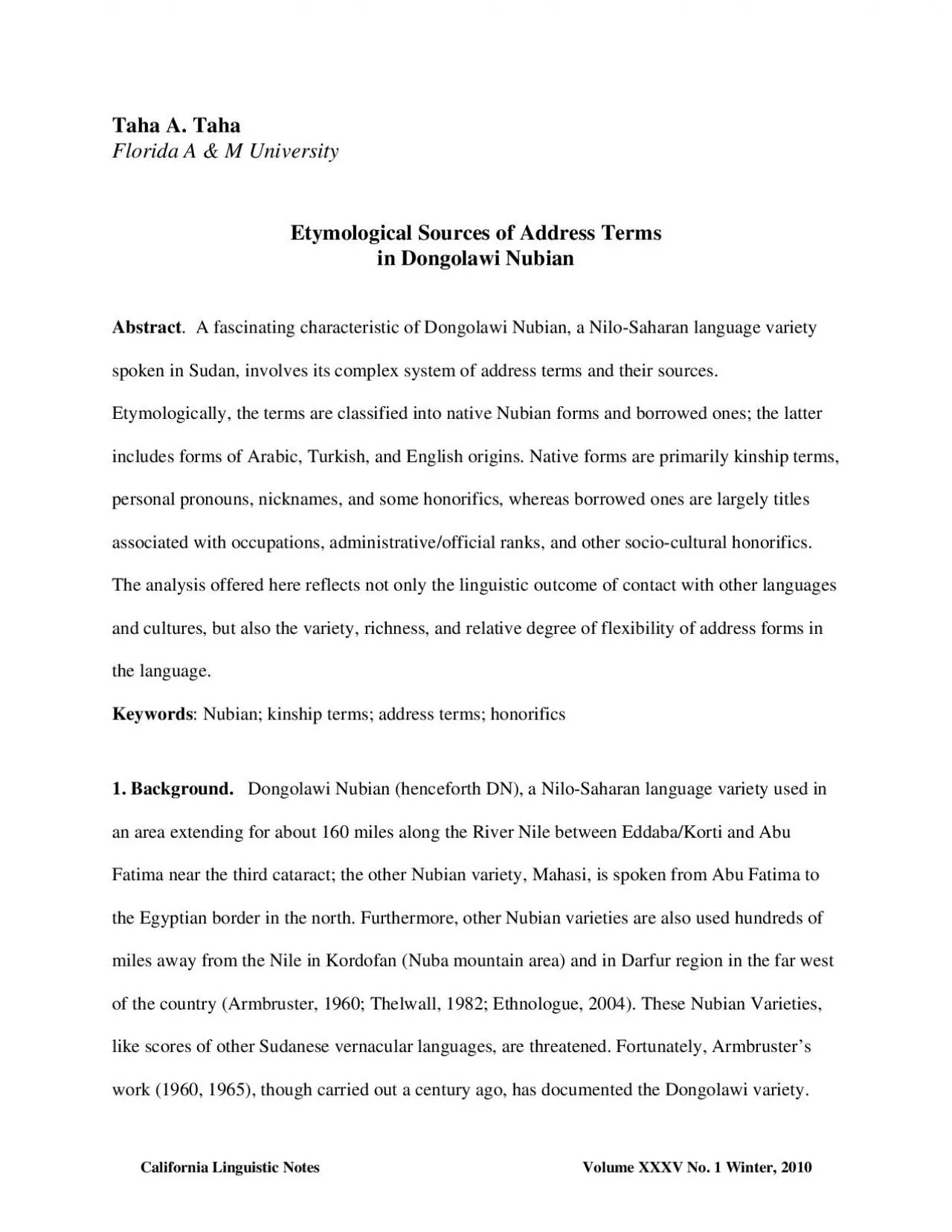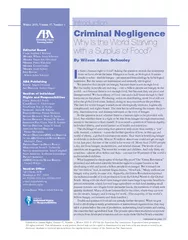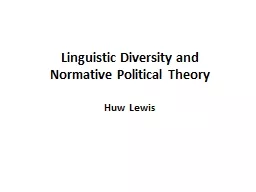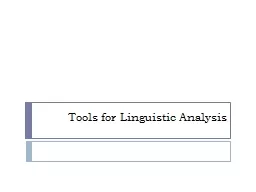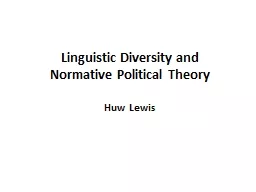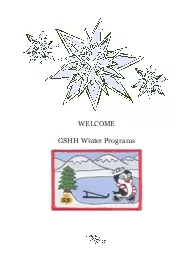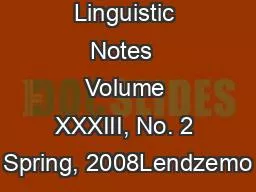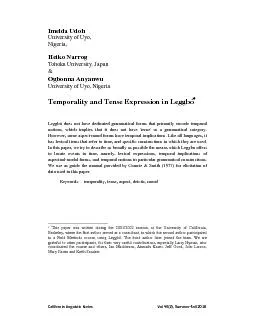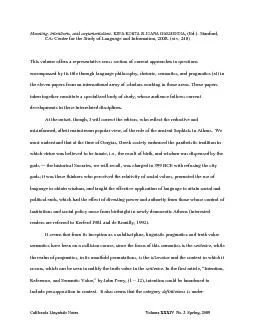PDF-California Linguistic Notes Volume XXXV No. 1 Winter, 2010in Dongola
Author : iainnoli | Published Date : 2020-11-20
California Linguistic Notes Volume XXXV No 1 Winter 2010Historically the Nubian region both in Egypt and in the Sudan has been accurately described as a
Presentation Embed Code
Download Presentation
Download Presentation The PPT/PDF document "California Linguistic Notes Volume XXX..." is the property of its rightful owner. Permission is granted to download and print the materials on this website for personal, non-commercial use only, and to display it on your personal computer provided you do not modify the materials and that you retain all copyright notices contained in the materials. By downloading content from our website, you accept the terms of this agreement.
California Linguistic Notes Volume XXXV No. 1 Winter, 2010in Dongola: Transcript
Download Rules Of Document
"California Linguistic Notes Volume XXXV No. 1 Winter, 2010in Dongola"The content belongs to its owner. You may download and print it for personal use, without modification, and keep all copyright notices. By downloading, you agree to these terms.
Related Documents

